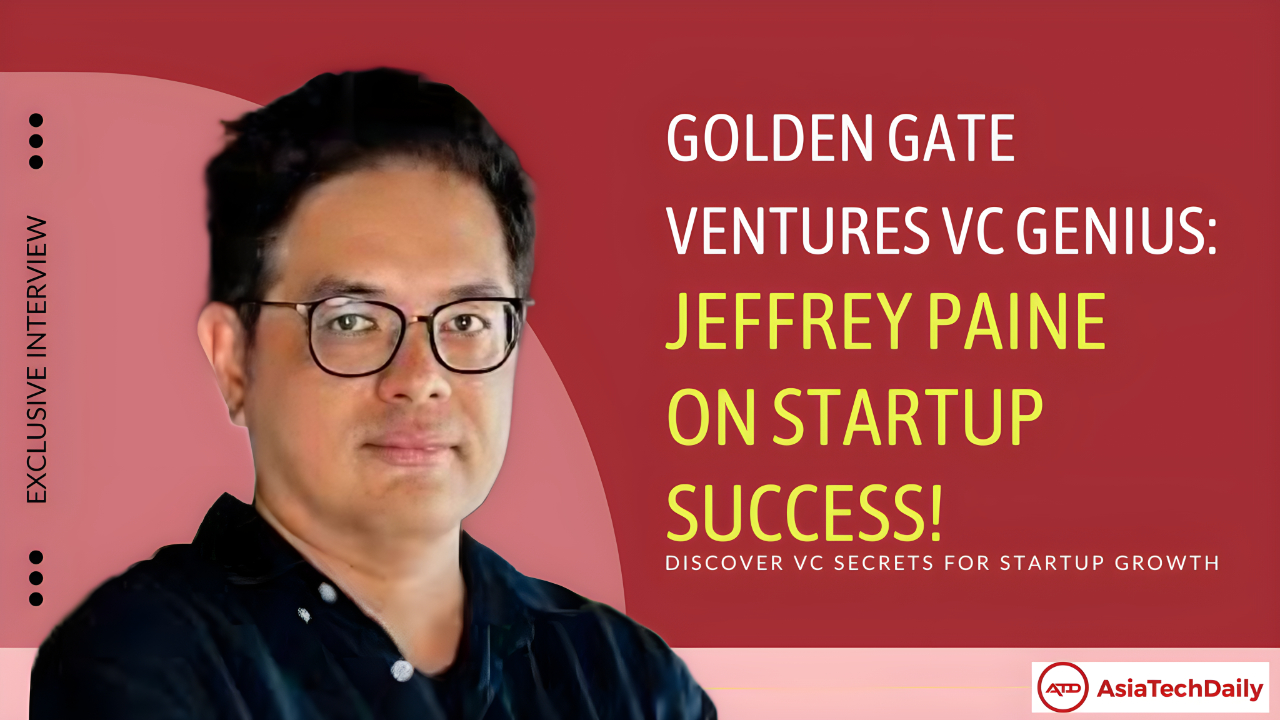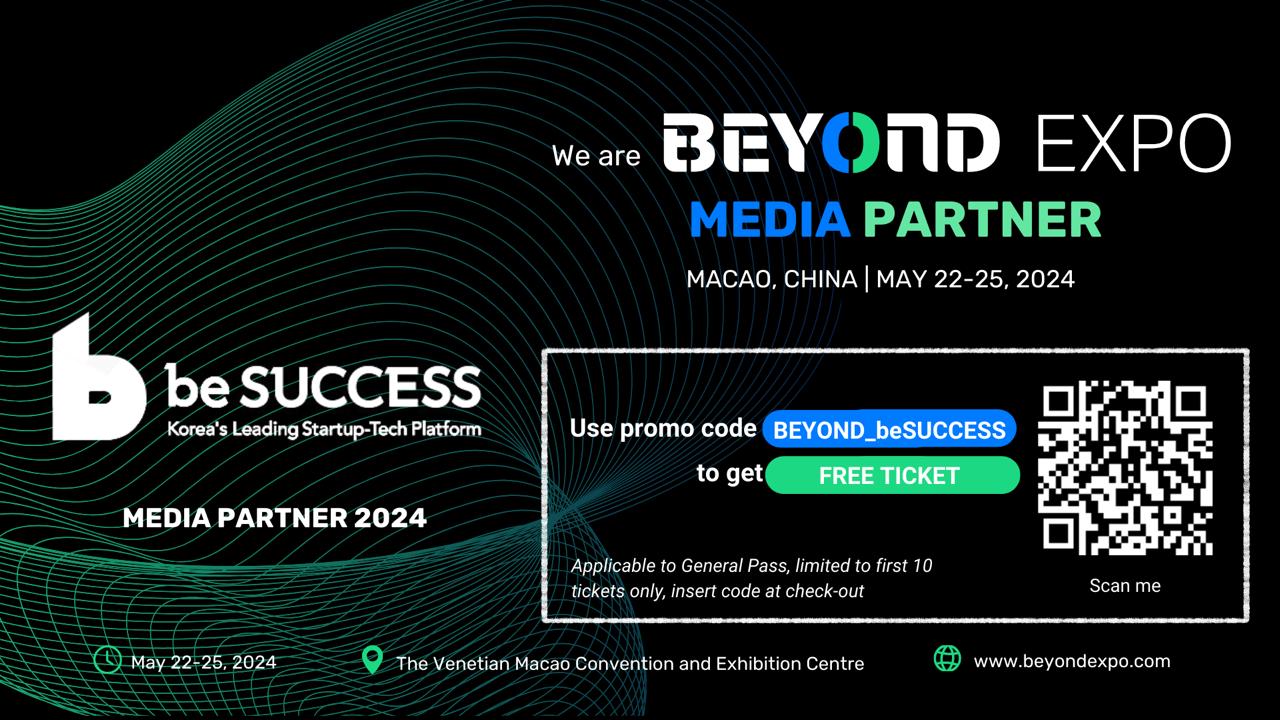AsiaTechDaily – Asia's Leading Tech and Startup Media Platform

Insider’s Perspective: Golden Gate Ventures’ Jeffrey Paine Shares Advice for New Investors – Part 1
Golden Gate Ventures, a venture capital firm established in 2011, has carved an indelible mark on Southeast Asia’s startup ecosystem. Rooted in Silicon Valley expertise with dedication to Southeast Asia, the firm has supported numerous audacious founders and companies toward success.
With its headquarters in Singapore and offices in Indonesia and Vietnam, Golden Gate Ventures has launched four funds and amassed over $250 million in assets under management (AUM). Their portfolio includes investments in more than 70 companies, with nine unicorns as they continue to empower entrepreneurs around the world.
By providing both human and financial capital, the firm aims to advocate founders who dare to challenge conventions and leverage tech to reshape industries.
Under the leadership of Jeffrey Paine Golden Gate Ventures has created a portfolio spanning diverse sectors and a keen eye for disruptive innovation to support entrepreneurs aiming to redefine the status quo.
In an exclusive interview with AsiaTechDaily’s CEO, James Jung, Paine offers invaluable insights into Golden Gate Ventures’ unique positioning within the venture capital landscape. He sheds light on the company’s focus on early-stage funding, with an emphasis on Series A and below investments.
Delve into the vibrant world of Golden Gate Ventures with an exclusive series featuring its Co-founder, Jeffrey Paine.
James: Every fund has a unique purpose. Please explain the type of the fund and its investment criteria and target.
Jeffrey: First and foremost, we are early-stage funds; we focus on Series A and below, including pre-SEED, SEED, and pre-series A stages. Check sizes range anywhere from US $300k to US $2m. We are also agnostic, investing in most sectors except life science. Our strategy and themes change with every fund, and sometimes even every nine months. At the moment, we are focusing a little more on B2B, FinTech, and DeepTech because that’s how the market is evolving and shifting.
James: Looking at the Golden Gate Ventures track record, there should be some successful cases by now. Can you share who they are and provide insights into the exit strategy you use and the lessons you learn from those successful exit cases?
Jeffrey: There’s a lot to cover. We have maybe 60-65 investments, about nine unicorns, and several exits. There are a couple of IPOs via reverse takeovers, like specs. There are secondary sales. There are straight M&A exits.
Generally, if the company is doing well, raising money, having enough money, doing well operationally, and being in multiple markets, it tends to go for a US IPO. And that typically takes about 12 to 15 years, which is quite different from what you normally hear.
Most venture funds are between 8 to 10-year funds. And if your investments are exiting in year 15, then you have to do a few things to try to capture that value.
One thing that I learned is that the emerging market takes a bit longer to get to maturity for many reasons. One is when you’re new; two is when you are scaling; every country is different. Third, it’s also harder to raise capital compared to the West. Things take a bit longer here. Going forward, I would say the IPO market is still something that everyone wants to go for, but it’s probably changing a little bit, meaning there will be small IPOs, potentially in the West, and definitely in our region. M&A is still happening, but it’s going to be slow. And secondary sales are probably where most of the activity will be. If your early-stage fund is more beneficial, you can sell at Series C or Series D. Growth-stage funds are a little bit more challenging, but if you’re an early-stage fund, there are multiple options to exit. But exits are generally more tricky when coming from emerging markets, especially post-2022. It’s something that every fund and every investor will work doubly hard to make sure the funds are returned to the investors.
James: Which top 3 areas will you prioritize investing in over the next three to five years? And why? Like B2B, like AI?
Jeffery: I would probably cover a few. I think AI is still relevant, especially on the infrastructure, database, algorithm, and hardware sides. Then, AI and healthcare are going to be pretty large.
(Let me cover the question later.)
So, AI is still there. Of course, the application layer on Generative AI is a little bit too crowded, but I think there will be a few winners. But it will probably soften this year. But fundamental AI infrastructure is still quite important. I would say quantum is the next one. Quantum AI is quite interesting. Material science and chemistry-based startups will be something that I’m looking at because all these three areas are interlinked. So, if you want better AI hardware, you have to invest in material science, innovations, etc. There’s a lot of things that are intertwined.
And then climate tech is another one. Climate tech is probably not going to stop, although there will be a lot of challenges because it’s very capital-intensive. But the capital will still go there. So, AI and climate tech, for sure. Quantum is a bit far, but it’s coming soon. Then, material science companies and synthetic biology will slowly come.
Now, the problem is not the sectors. The problem is where we are. If you invest in such sectors in Southeast Asia or in Singapore, you don’t have a lot of quality, which may be a little bit suspicious. But all this stuff is relative to what you do as a fund. This means that if your fund size is large, then your portfolios need to be in the top three or four in the world in order to generate the returns that you want.
If your fund size is small, then your expectations can be lower. But the problem is deep tech companies need a lot of money. And if they need a lot of money, they need a large return. So you’re kind of caught in between. You don’t know what you should be doing. The formula is fairly straightforward.
Going forward, B2B companies and deep tech companies need to be as large as possible. Then you don’t have to be too conscious about being number one in Asia, number one in Southeast Asia, number one in Singapore, number one in Indonesia. You just have to aim as high as possible. The problem is just that. Number one, are you in the top four in the world? And if you are, do you know how to scale globally? I think that’s where the challenge for founders is for the next three to five years. And various governments have asked me the same question. How do I generate unicorns in my country? And the answer is this. The startups need to be in the top three or four in the world. And after that, they need to know how to go global.
Right now, we are fairly weak on both sides, both areas. So, in the next three to five years, we need to improve our capability of being technically very strong. And then, after that, you know how to build products and how to sell globally.
James: Golden Gate Ventures is known for its investment in bold and innovative founders in Southeast Asia and across Asia. Could you provide an example of a particularly daring startup and explain how it aligns with what Golden Gate Ventures is looking for in a company?
Jeffrey: I would say one example, like a quick example, is a company called Alami. Dima is the founder. So when we met him, he had just finished his MBA, and he wanted to do something in Islamic finance because of his prior experience at Citibank. It wasn’t easy in the beginning; nevertheless, he pushed through it and made sure he was delivering what the market wanted, and he was extremely focused on doing what he did. So, I would say there are founders who are innovative, but they face challenges, yet they keep pushing forward. And it’s not like they are doing extremely well or everything is smooth sailing, but things are opening up, the market is understanding, the market is adapting, and the market is beginning to be extremely ready for what he has. But I think the founders do have to keep assuming that there will be pushbacks, but you just have to keep focused and keep believing in what you’re providing and just keep pushing it.
James: What’s your opinion on syndicate investment for early-stage investors? How does the syndicate investment structure work at Golden Gate Ventures?
Jeffrey: For us, it depends on the stage of the round. So, if it’s an early round, if the startup and founding team need more help, a diverse set of investors is good for them. So, we do tend to syndicate a bit more at the earlier stage. And then, when there is some conviction in the company, we will try to take as much as we can in the next round. But it doesn’t mean we block out everybody else. There is a certain percentage that we are looking for. Every fund probably has a certain way of modeling its fund. So we normally want to obtain anywhere from five to 15% from a company. Sometimes, we invest from the first check, and we get that amount. Sometimes, we do a smaller check in front and a bigger check in the back. But the idea is to try to achieve ownership within that range.
As we conclude this insightful journey into venture capital, we invite you to stay tuned for the forthcoming installments in our series with Jeffrey Paine. With each article, we’ll delve deeper into the strategies, challenges, and triumphs of Golden Gate Ventures, offering insights for both investors and aspiring entrepreneurs alike. Stay tuned for further articles from the series.
Also Read:
- Malaysia’s KWAP Invests $21M in Local Startups and VC Funds Under Dana Perintis Strategy
- East Ventures Expands Reach with South Korea Fund, Appoints Sang Han as Partner
- Korea’s Simple Planet Secures 8 Billion Won Investment for Cell-Cultured Food Innovations
- Malaysian Startup Qarbotech Targets Global Market with $700K Boost
- Orient Growth Ventures Raises $90M for SE Asia and India Ventures





